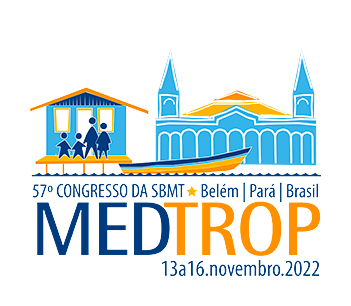Dados do Trabalho
Título
Socioenvironmental Factors Influencing Distribution and Intensity of Soil-Transmitted Helminthiasis in the Brazilian Amazon: Challenges for the 2030 Agenda
Introdução
Soil-transmitted helminthiasis (STHs) are poverty-related diseases with high prevalence rates in developing countries.
Objetivo(s)
The present study aims to describe the epidemiological scenario of STHs in an urban population in the Brazilian Amazon.
Material e Métodos
The Portel microregion (Pará State) has four municipalities, including Bagre, where the study was conducted, which has an HDI of 0.471 (very low) and a population of 30,000 inhabitants. A cross-sectional survey (n = 349 children aged 1–15 years) was carried out to obtain faecal samples and sociodemographic and sanitation data. This sample size was obtained considering a population of 10,000 children, expected frequency of 35%, margin of error of 5%, and confidence level of 95%.
Resultados e Conclusão
Among the children, 143 (41%) were positive for at least one STH. Prevalence rates of infections by Ascaris lumbricoides, Trichuris trichiura, and hookworms were 24.4%, 42.6%, and 9%, respectively. A logistic regression multivariate model showed that infection with A. lumbricoides is significantly more frequent in children aged 11–15 years (odds ratio [OR] = 2.38; 95% confidence interval [CI] = 1.15–4.94; p=0.018) and the presence of latrines inside houses is a protection factor against ascariasis (OR = 0.38; 95% CI = 0.17–0.85; p=0.019). Positivity for T. trichiura is higher in the 5–10 (OR = 3.31; 95% IC = 1.85–5.89; p=0.001) and 11–15 age groups (OR = 3.16; 95% IC = 1.66–6.00; p=0.001), in children living in poor families (OR = 1.78; 95% IC = 1.01–3.14; p=0.045) and practicing open evacuation (OR = 2.07; 95% IC = 1.07–3.99; p=0.029). Hookworm infection is more frequent in children aged 11–15 years (OR = 6.70; 95% IC = 1.91–23.43; p=0.002), males (OR = 6.35; 95% IC = 2.00–20.14; p=0.002), and those living in stilt houses (OR = 3.52; 95% IC = 1.22–10.12; p=0.019). The use of albendazole in the last six months was a protection factor against hookworm infection (OR = 0.31; 95% IC = 0.10–0.96; p=0.042). The proportion of mild, moderate, and severe infections was 55.2%, 37.8%, and 7%, respectively, for A. lumbricoides, 72.4%, 24.3%, and 3.3% for T. trichiura, and 93.8%, 3.1%, and 3.1% for hookworms. Significantly higher worm burdens in T. trichiura and hookworm infections were associated with practicing open defecation and living in stilt houses. The data points to the need to improve sanitation infrastructure in Amazonian cities with similar sociodemographic and environmental characteristics
Palavras-chave
Soil-Transmitted Helminthiasis; Brazilian Amazon; 2030 Agenda
Área
Eixo 07 | Helmintíases
Categoria
(Concorra com apenas um trabalho) Concorrer ao Prêmio Jovem Pesquisador - Doutorado
Autores
Deiviane Aparecida Calegar, Polyanna Araújo Alves Bacelar, Brenda Bulsara Costa Evangelista, Kerla Joeline Lima Monteiro, Jéssica Pereira dos Santos, Mayron Morais Almeida, Márcio Neves Bóia, Filipe Anibal Carvalho-Costa
